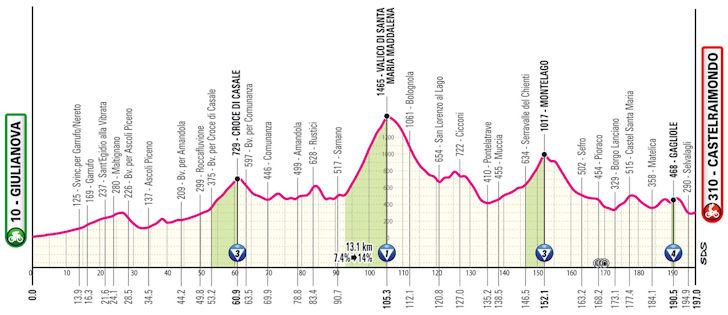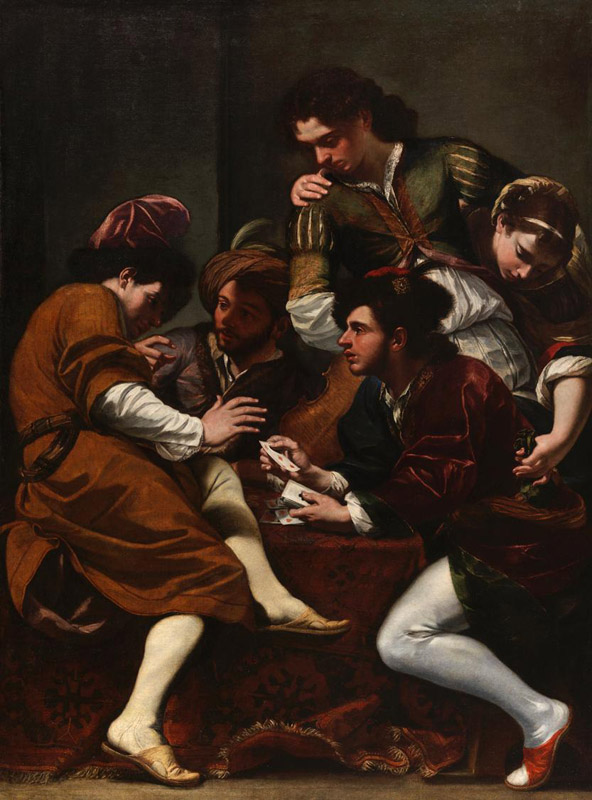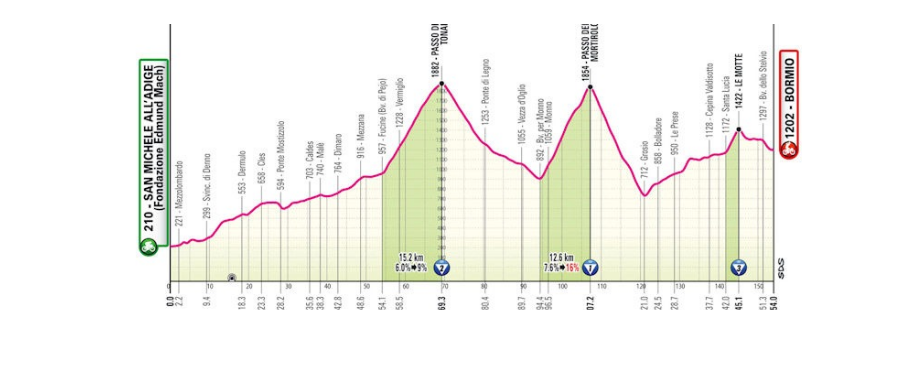Giulianova – Castelraimondo
17 May 2025
197 km
A hilly stage through the Appennijew, heading North-West.
Tirreno -Adriatico fans might find the route familiar.

NEXT STAGES
Giro d’Italia 2025 Stage 9 Gubbio Siena (181 km)
Gubbio – Siena 18 May 2025 181 km If Toscana (Tuscany), then Strade Biance-styled gravel stage at the… Read More »Giro d’Italia 2025 Stage 9 Gubbio Siena (181 km)
Giro d’Italia 2025 Stage 17 San Michele all’Adige – Bormio (155 km)
Another day in the mountains. Stage 17 of Giro d’Italia 2025 between San Michele all’Adige and Bormio on… Read More »Giro d’Italia 2025 Stage 17 San Michele all’Adige – Bormio (155 km)
Giro d’Italia 2025 Stage 11 Viareggio – Castelnovo ne’ Monti (185 km)
Viareggio – Castelnovo ne’ Monti 21 May 2025 185 km IMPORTART CLIMB OF THE DAY GENERAL… Read More »Giro d’Italia 2025 Stage 11 Viareggio – Castelnovo ne’ Monti (185 km)
ITALIAN PAINTING OF THE DAY

Giovanni Battista Buonocore (1643–1699) was an Italian Baroque painter from Campli, in the region of Abruzzo.
Campli is very close to Gulianova, the start of the 9th stage of Giro d'Italia 2025.
Although not as widely known today as some of his contemporaries Buonocore was a respected figure in his time and played an important role in the Roman and broader Italian art scene of the late 17th century.
He painted primarily religious and historical subjects in the dramatic and emotionally charged Baroque style. His work reflects the influence of prominent Roman Baroque painters such as Carlo Maratta and Pietro da Cortona, combining clarity of composition with theatricality and movement.
One of his significant achievements was his appointment as Principe (Director) of the prestigious Accademia di San Luca in Rome in 1698, shortly before his death. This role reflected the high regard in which he was held by his peers. The academy was a central institution in promoting and regulating the arts in Italy, and Buonocore's leadership underscored his importance in the Roman artistic community.
Not many of his individual works are well-known today, but his paintings often adorned churches and palaces, contributing to the rich tapestry of late Baroque Roman art. He is remembered for his solid technique, refined color palette, and ability to convey religious intensity.
The Card Players
depicts a group of five young individuals engaged in a game of cards, capturing a lively and intimate moment. The composition reflects the High Baroque style, characterized by dramatic lighting and dynamic interaction among the figures. Notably, the scene includes an element of deception: as one player focuses on the game, a woman behind him discreetly steals his moneybag. This narrative serves as a moral commentary on vice and virtue, common themes in Baroque art.
